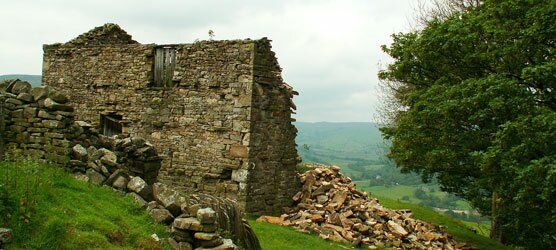Historic farm buildings: Constructing the evidence base

Constructing the evidence base
National planning policy has over the last decade moved from a policy advocating restraint on development in rural areas to the advancement of integrated economic, social and environmental objectives. It is now requiring local authorities to take a more flexible and positive approach to the sustainable reuse of redundant rural buildings, especially for economic use, and develop positive design policies based on a good understanding of local characteristics and objectives which maintain and where possible enhance the quality, character and local distinctiveness of the rural environment.
Research Aims and Methods
In 2001 English Heritage and the Countryside Agency commissioned the Countryside & Community Research Unit to undertake research into the nature, condition and management of English historic farmsteads. The overall aims of the research were:
- to provide baseline data on the character and management of, and threats to, listed agricultural buildings in rural areas;
- to determine the factors that precipitate change in management of the historic farm building resource
To fulfill these aims an exhaustive range of research methods was used, combining desk study with the analysis of empirical information from databases or collected via questionnaires, and telephone and personal interviews.
Main conclusions
Limited knowledge of historic farmsteads in their broader context, and the lack of a consistent framework for understanding and valuing farmsteads and their buildings, was identified as the greatest obstacle to:
- informing clear and transparent decision-making at a local scale;
- informing determination of the most appropriate options for reuse;
- identifying issues at the earliest possible stage relating to the impact of development on significance and character – pre-application discussion being a critical factor in progressing and determining planning applications;
- the development of local plan policies for rural buildings that work from broad principles to detail;
- informing consistent and evidence-based tools for use in development control and listed building consent;
- the development of place-specific guidance based on character and context, as recommended in national planning policy (PPS1, 7 and 12) and in DCLG’s Design and Access Statements and related guidance by CABE;
- the targeting of resources, including through the Higher Level Agri-Environment Schemes;
- making the built environment part of the more integrated approaches to land management that are developing.
What's New?
-
The National Heritage List for England is now live on the English Heritage website.
-
Welcome to the HER21 page. This page offers access to the full suite of HER21 project reports.
